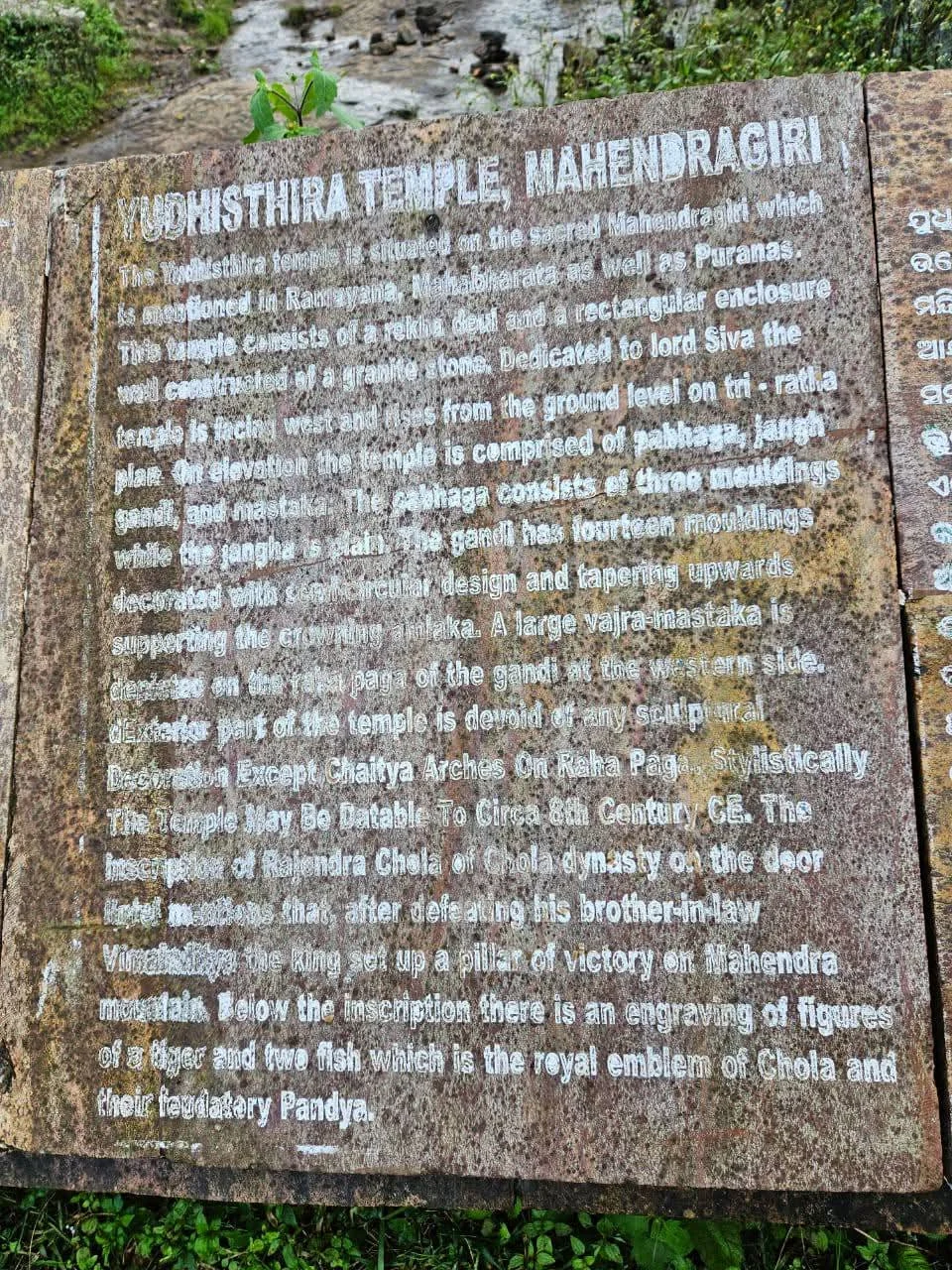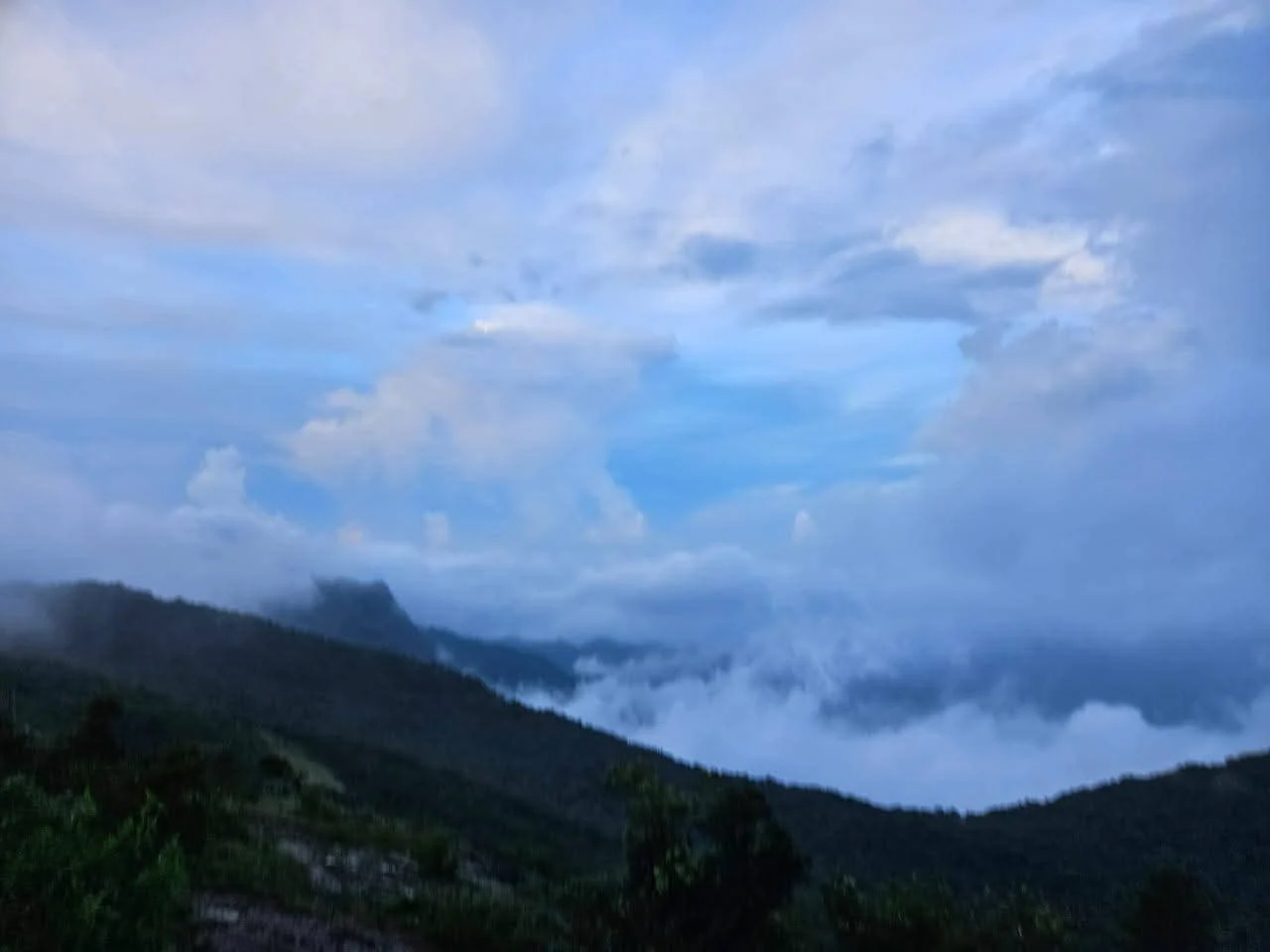Mahendragiri : One of the Ancient Doors of Heaven
Location & Historical Significance:
The Mahendragiri of the eastern ghat range of mountains is arranged at latitude 18 ° .54′ north and longitude 84 ° .24’ east on the borderland between Odisha and Andhra Pradesh . It is located 32 miles toward the southwest of Berhampur city of Odisha. The Puranas allude to the Mahendragiri as being one of the seven kula giri or seven principal mountain chains of India. The eastern ghats run as separated hills with intermittent breaks.I mean… There is no continuity. These detached hills have different names at different places along the eastern coast of India. In the extreme north, the hills are known as the Maliahas. The portion of the eastern ghats near the border between Odisha and Andhra Pradesh is still known as the Mahendragiri . There is another Mahendragiri in South India, situated in the Tinnevelly district of Tamilnadu. But here I am discussing the whole range of hills reaching out from Odisha to the district of Madhura in Tamil Nadu which was known by the name Mahendragiri .
Image: Srikanta Singh
# The Mahabharata specifies Mahendragiri while depicting parshuram’s repentance
# In the Ramayana, it has been portrayed that the seven mountain ranges are designated as seven ancient doors of heaven ( renowned as sapta kula giri ) . Among the seven , Mahendragiri was best known to the incredible poets as a sacred place where from Hanuman jumped for Sri Lanka to look for Sita.
# Mahendragiri finds mention in the Odia Mahabharata by Sarala Das ( a poet of the 15th century A.D.) and in the Raghuvamsa of Kalidas . Kalidas in Raghuvamsa ( last quarter of fourth century AD) refers to the king of Kalinga as the ruler of Mahendragiri, thereby suggesting the fact that the Mahendragiri region was the political headquarters of Kalinga .
The five Pandava brothers while in exile came to the Mahendragiri to perform the Shraddha of their father . Arjun one day while chasing a rhinoceros , by mistake he killed a holy cow called Kapila which was grazing at the foothills. When the brothers came to know about Arjun‘s wrongdoing , they prayed to Lord Krishna to help them out of this sin.
Lord Krishna arranged a Devasabha ( meeting of divine beings ) on the top of the mahendragiri. Shivalingas sprang from the places where the cows’ body parts fell . The Shivalinga which sprang from the ear of the cow was venerated by the Pandava brothers as Gokarneswara . The Gokarneswara temple better known as Kunti temple is still there in Mahendragiri. According to legend, the temples standing on the top of the mountain were built by and named after the Pandava brothers and their mother Kunti.
# There are three temples standing on the top of the Mahendragiri hill. They are known as Gokarneswara or Kunti Temple , Yudhisthira temple and Bhima Temple . The Kunti temple is dedicated to Lord Gokarneswara.
# The rivers Vamsadhara , Mahendra Tanaya and Mahendragiri find mention in the Matsya Purana and Vayu Purana.
# The Mahendragiri has been a popular centre of pilgrimage since days of yore. Every year during Shivaratri or on the day of Jagara thousands of pilgrims from the neighbouring districts and from Andhra Pradesh gather there to celebrate the day.
# The sacredness of the Mahendragiri is attested by the Gayashur ( a kind and pious demon) episode of Vishnu Purana.Viraja Kshetra Mahatmya (a traditional account of Odisha) describes in detail how the demon Gayashur was killed by Lord Vishnu and his legs fell on the Mahendragiri and there after the mahendragiri has been recognised as the centre of Gokarneswara Shiva temple where pindas ( lumps made out of cooked rice) are offered to ancestors. The Agni Purana, Markandeya Purana, Skanda Purana, Vayu Purana…etc . all give us information regarding the sacredness of the Mahendragiri.
# There is mention regarding Mahendragiri in two foreign geographer’s travel accounts. They are Pliny and ptolemy.
# According to the legend, recorded in Odia Mahabharata by Sarala Das , there are three temples found in the Mahendragiri and those temples were built by Pandava brothers and their mother Kunti who visited the Mahendragiri during the period of their exile. Those temples are the Bhima temple, the Yudhisthira temple and the Kunti temple.
# There is a reference of Mahendragiri in the Nasik cave inscription of Vasisthaputra Pulumavi of the Satavahana dynasty.The Nasik cave inscription of the 2nd century AD records the conquests and achievements of the Gautamiputra Satakarni. Thus it can be presumed that a part of Kalinga of those times was included in the Satavahana empire in the 2nd century AD
Temples on the top of Mahendragiri
You can go through the following article on “Kalinga style of temple architecture and its growth over centuries ” so as to develop a basic understanding first.
There are three temples standing on the top of the Mahendragiri hill. They are known as Gokarneswara or Kunti temple , Yudhisthira temple and Bhima temple . The Kunti temple is dedicated to Lord Gokarneswara . It is a single shrine having the characteristics of a Rekha temple ( or curvilinear tower ) built in the Kalinga style. The height of the temple is about 30 feet and it does not have a plinth. The Shiva temple has regular Parswadevatas ( side deities) like the Ganesha, Kartikeya and Parvati .
Gokarneswara temple or Kunti temple
Image: Srikanta Singh
Lord Ganesh as Parswadevata
Image: Srikanta Singh
Lord Kartikeya as Parswadevata
Image: Srikanta Singh
The next temple is called the Yudhisthira temple . It is on the other end of the flat top portion of Mahendragiri . Its front part is enclosed by a hexagonal wall and the temple is of the tri-ratha type. This temple can be compared with the Satrughneswara group of temples at Bhubaneswar which are roughly assigned to the last part of the 6th century A.D.
Yudhisthira temple
Image: Srikanta Singh
Yudhisthira temple
Image: Srikanta Singh
The last one is the Bhima Temple. It is located on the highest point of Mahendragiri. Its height is about 25 feet . This Temple does not have side deities . Architecturally it is probably the earliest specimen of temple architecture in Odisha, generally ascribed to the Gupta age.
Bhima Temple
Image: Srikanta Singh
Bhima Temple
Image: Srikanta Singh
Image: Srikanta Singh
Inscriptions found in Mahendragiri
Four inscriptions have been found on the hill top of the Mahendragiri . These inscriptions illuminate the historical backdrop of the Mahendragiri . The main inscription is to be tracked down on the chunk to one side of the entry to the Gokarneswara temple . The contents are written in early Nagari and Telugu. The inscription is dated 1123 A.D. It records the endowment of a lamp to the Mahendreswara temple . This would recommend that the Gokarneswara or Kunti temple was otherwise called the Mahendreswara during those days.
The second inscription is in Telugu script and is spotted on a stone slab on the left side of the entry to the Gokarneswara temple . This is a record of the Ganga ruler Anantavarman Chodaganga engraved in 1133 A.D. The engraving specifies the endowment of a lamp by an occupant of Arasavilli to the temple of Gokarneswara on the Mahendragiri.
The third inscription has been spotted on the architrave of the entryway of the Yudhisthira temple . This is a record of Chola ruler Rajendra Chola in Sanskrit . It expresses that after defeating his brother in law Vimaladitya ( 1015-22 A.D.) Rajendra Chola erected a pillar of triumph on the Mahendragiri .The symbols of the Chola and his Pandyan feudatory ( that is the tiger and two fishes) are engraved beneath the inscriptions but unfortunately the said pillar is not found on Mahendragiri nowadays.It was likely destroyed in a later period.
The last inscription is in Tamil and found on three rocks lying close to the Kunti temple . It is a Tamil rendition of the past engraving of Rajendra Chola in Sanskrit.Though the site is believed to be of the era of Mahabharata, the temples appear to be built there much later .
Please never forget to give your comments in this regard in the comment box.



Dr. Manoj Mishra ,lunarsecstasy@gmail.com
